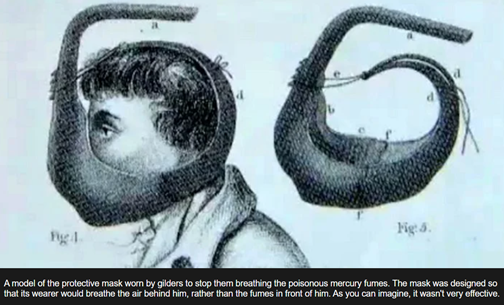Clocks
Death Clocks
Yes, you read that correctly. That beautiful example of French craftsmanship sitting on someone's mantel or other pride of place was probably the cause of someone’s death in the manufacturing chain back in the day. Maybe not all at once, but cumulatively, the evidence suggests that many gilders died an early death from mercury fumes given off in the fire-gilding process. Consider the following:
-
"What is a death clock and how did it get its name and reputation? Simply put, a death clock is an Ormolu decorated clock. How did this type of clock decoration receive the distinction of the title of "Death Clock"? The source of the distinction lies in the process itself. Ormolu is an 18th-century English term for applying finely ground, high-carat gold in a mercury amalgam to an object of bronze. The mercury is driven off in a kiln (leaving behind a gold-colored veneer). The French refer to this technique as bronze doré; in English, it is known as guilt bronze. The manufacture of true ormolu employs a process known as mercury-gilding or fire-gilding, in which a solution of nitrate of mercury is applied to a piece of copper, brass, or bronze, followed by the application of an amalgam of gold and mercury. The item was then exposed to extreme heat until the mercury burned off and the gold remained, adhered to the metal object. Due to exposure to the harmful mercury fumes, most gilders did not survive beyond 40 years of age. No true ormolu was produced in France after around 1830 because legislation had outlawed the use of mercury. Therefore, other techniques were used instead but nothing surpasses the original mercury-firing ormolu method for sheer beauty and richness of color. Electroplating is the most common modern technique. Ormolu techniques are essentially the same as those used on silver, to produce silver-gilt (also known as vermeil)." https://pineknollclockshop.blogspot.com/2012/10/19th-century-death-clock.html
-
"Due to exposure to harmful mercury fumes during the "dorure au mercure" (fire-gilding) process, most gilders did not survive beyond 40 years of age as a consequence of mercury poisoning. Even in those days, they took all kind of precautions against mercury poisoning. These measures included chewing bread, or placing a piece of leather with an embedded silver coin over the tongue (the silver coin would change color when exposed to mercury). There was also a kind of mask devised to inhale the air from behind the head. None of these measures were sufficient counter-measures against mercury poisoning. Consequently the use of mercury was outlawed by French legislation after around 1830, although its use continued commonly until circa 1900 and it even was still in use in a very few workshops around 1960. To replace ormolu, other gilding techniques (like electroplatingfrom the mid-19th century on) were utilized instead."
https://handwiki.org/wiki/Engineering:French_Empire_mantel_clock
-
The mask referred to above looks like this:
https://www.mayfairgallery.com/blog/ormolu-good-as-gold/
-
"André-Antoine Ravrio was one of the greatest French bronziers of the pre and post Revolution period. It is presumed that he died from mercury poisoning especially since he bequeathed 3,000 francs to anyone who could protect craftsmen from the effects of mercury gilding. The prize was won three years later by the fondeur and chemist, Darcet."
https://www.richardreddingantiques.com/artists/188-gabriel-le-roy/works/9634/
-
Ravrio's name plaque which describes him as a "bronzier" can be seen below:

